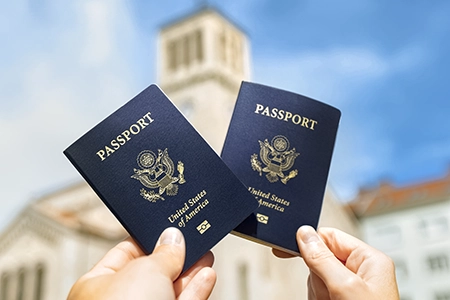The world of professional translation is vast and intricate, encompassing a diverse array of languages, specialisations, and cultural nuances. Professional translation associations play a pivotal role in upholding the standards and integrity of the translation industry. These associations are not just networks for professionals but also ensure that the art and science of translation are respected and advanced.
One of the key functions of these associations is certifying translators. This process serves as a benchmark for proficiency and professionalism in the field. It’s a seal of approval, indicating that a translator has met certain standards of skill and knowledge. This is crucial in an industry where precision and accuracy are required for effective communication across linguistic and cultural barriers.
This article delves deep into the world of professional translation associations and their role in certifying translators. It explores how these bodies contribute to maintaining high standards in translation, ensuring that certified professionals are not just linguists but also custodians of intercultural communication. Through this exploration, we seek to understand the significance of these associations in the broader context of the translation field, offering insights into why they matter and how they shape the profession.

Before we begin…
Looking for certified translation services that are fast, precise, and budget-friendly? Look no further! We offer top-notch translation solutions at unbeatable rates. Contact us now to get a quote and let us help you communicate effectively in any language.
Understanding Translation Certification
Translation certification symbolises proficiency and excellence in the language translation industry. It goes beyond just being a certification; it indicates a translator’s expertise, knowledge, and dedication to their work. The certification process is typically rigorous and evaluates a translator’s linguistic abilities, cultural awareness, and technical proficiency in translating documents from one language to another.
For a translator, obtaining certification is more than just demonstrating their proficiency; it is about building trust with clients and peers. It demonstrates that they adhere to the highest standards of accuracy and professionalism, which is especially crucial in fields such as legal, medical, or technical translations, where precision is essential. For clients, working with a certified translator ensures quality, reliability, and proficiency in handling the subtleties and complexities of different languages and cultures.
The certification process usually involves comprehensive examinations that assess a translator’s linguistic proficiency and understanding of translation ethics and practices. Some certifications may also require ongoing education or professional development to keep translators informed and updated with the latest developments in the field.
The United Kingdom’s translation certification landscape includes several esteemed organisations, such as the Chartered Institute of Linguists (CIOL) and the Institute of Translation & Interpreting (ITI). These organisations certify translators and provide a framework of professional development and standards. In the UK, certification from these institutes is highly regarded and often considered a prerequisite for translators seeking to work in specialised fields. The UK’s approach to certification emphasises not only linguistic proficiency but also an in-depth understanding of cultural contexts, ensuring that translations are accurate and culturally appropriate.
Overview of Major Translation Associations
The professional translation field is backed by numerous esteemed associations globally, each performing a crucial role in maintaining the industry’s standards and practices. These associations serve as professional hubs and centres for learning, certification, and advocacy for translators. This article will look closely at some of the major translation associations worldwide.
American Translators Association (ATA)
The American Translators Association, also known as ATA, is a well-known and highly respected translation association on a global scale. Headquartered in the United States, ATA provides certification in multiple language pairs that are widely recognized across the globe. The association emphasizes professional development, organizing conferences and seminars, and offering resources to seasoned and aspiring translators.
Institute of Translation & Interpreting (ITI)
The Institute of Translation & Interpreting is a leading organization in the United Kingdom’s translation community. ITI is well-known for its strict certification process and dedication to maintaining high professional standards. It offers a great opportunity for networking, professional development, and advocacy, specially designed to meet the unique needs of the UK translation industry.
Chartered Institute of Linguists (CIOL)
The Chartered Institute of Linguists is a prominent professional organization for language practitioners based in the UK. CIOL provides chartered linguist status, which attests to its members’ professional excellence and dedication. In addition to certifying translators, the institute strives to promote the significance of languages and cultural comprehension in both the public and private sectors.
Fédération Internationale des Traducteurs (FIT)
The International Federation of Translators (FIT) is a global federation of translation associations that brings together translators from different national associations. The FIT plays a unique role in the translation industry by fostering international cooperation and advocating for the rights and interests of translators worldwide. Moreover, it contributes to setting global standards in the translation profession and organizes international events.
These associations not only certify translators but also have a significant impact on shaping the future of the translation industry. They provide a framework for ethical practices, ongoing professional development, and a community for translators to share knowledge and experiences. By being part of these associations, translators gain access to a wealth of resources and a network of peers, which can be invaluable in their professional journey.
Certification Process by Associations
Different professional associations have unique criteria and procedures for certifying translators. For translators seeking certification and clients looking to hire certified professionals, it’s essential to understand these processes. In this article, we’ll explore how prominent associations certify translators and the specifics of their certification procedures.
Criteria and Requirements
To get certified, you generally need a mix of education, experience, and language skills. Most associations require a degree in translation, linguistics or a related field. Practical experience in translation is also necessary so that the candidate has real-world expertise in translating texts.
Examination Process
The certification process typically involves a comprehensive exam designed to rigorously test a translator’s ability to accurately and effectively translate material in their language pairs.
- ATA Examination: When taking the American Translators Association certification exam, candidates are evaluated on their ability to translate various text types from English to another language. The exam includes legal, medical, and technical documents.
- ITI Assessment: The Institute of Translation & Interpreting’s assessment process includes peer review of translation assignments and emphasizes professional conduct.
- CIOL Examinations: The Diploma in Translation is a high-level qualification offered by the Chartered Institute of Linguists. It involves a series of written exams that test translation skills in different subject areas and text types.
Other Requirements
Apart from passing exams, certain associations may require letters of reference, evidence of steady professional development, and following a professional code of ethics. Consistent learning and adherence to ethical principles are crucial to sustaining certification status in most associations.
Differences in Processes
Although the core components of certification, such as education, experience, and examination, are similar across different associations, there are some differences in their focus and format. For example, ATA’s certification specialises in assessing translation skills in specific language pairs. Meanwhile, ITI and CIOL incorporate aspects of professional practice and ethics into their certification processes. Additionally, the examination texts and grading criteria may vary, reflecting each organisation’s diverse standards and expectations.
Understanding these processes and their nuances is essential for translators looking to become certified. Each association’s certification process assesses a translator’s proficiency. It prepares them for the professional challenges they will face in their careers.
Benefits of Association Certification
Obtaining certification from a professional translation association offers numerous advantages, not only for translators but also for their clients. This certification is not just a credential but a representation of trust, expertise, and dedication to the highest quality standards of the translation industry.
Credibility and Professional Recognition
Being certified has numerous benefits, one of the most significant being enhanced credibility. By obtaining certification from a recognized professional association, a translator demonstrates that they have met rigorous standards of proficiency and professionalism. This serves as a seal of approval, particularly important in a field like translation, where trust and accuracy are crucial. This recognition often leads to greater respect from peers and potential clients, helping translators stand out in a competitive market.
Professional Development and Skill Enhancement
Professional associations offer a plethora of resources that are essential for continuous learning and skill development. Certified translators can benefit from specialized training, workshops, and seminars that keep them up-to-date with the latest trends and practices in the field. Ongoing professional development helps translators to provide high-quality services and adapt to the changing demands of the translation industry.
Networking Opportunities
Joining a professional association can provide certified translators with a wealth of networking opportunities. Conferences, meetings, and online forums allow for connections with industry peers, experts, and potential clients. These connections can lead to collaboration opportunities, mentorship, and new business prospects. Being part of these communities also enables the exchange of ideas and experiences, which is crucial for professional growth.
Benefits for Clients
Certified translators offer numerous benefits to clients. By working with certified professionals, clients can be confident that a knowledgeable and ethical expert will handle their translation needs effectively. This assurance of quality is especially significant in fields where translation accuracy is critical, such as legal, medical, or technical documents. In addition, clients who work with certified translators can expect professionalism, confidentiality, and timely delivery of services.
Certification from a professional translation association is a badge of honour and a comprehensive package of credibility, professional growth, networking, and quality assurance. For translators, it serves as a pathway to excellence in their craft. At the same time, it is a symbol of trust and reliability for clients.
Further Reading
To gain a deeper understanding of professional translation and the importance of certification, explore these informative resources:
- American Translators Association (ATA) – Official Website: Discover ATA’s resources for translators, including certification, events, and professional development.
- Institute of Translation & Interpreting (ITI) – Official Website: Discover ITI’s certification criteria, member benefits & resources for translators.
- Chartered Institute of Linguists (CIOL) – Official Website: Discover CIOL’s Diploma in Translation and other qualifications that promote excellence in the language and translation industry.
- “Found in Translation: How Language Shapes Our Lives and Transforms the World” by Nataly Kelly and Jost Zetzsche: This book provides a captivating insight into the translation industry, underscoring the significance of translators in our globalized world.
- “The Translator’s Handbook” by Morry Sofer: A guide for professional translators, covering certification, technology, and business practices.
- “The Prosperous Translator” by Chris Durban: This book provides valuable advice for translators on how to build a successful and financially rewarding career in the translation industry.
- ProZ.com: A comprehensive online resource for translators and language professionals, offering forums, job listings, and a wide range of resources for both experienced and aspiring translators.
These resources provide a broad spectrum of information, from the intricacies of certification to the practicalities of building a career in translation, making them invaluable for anyone interested in or currently working in the translation industry.



